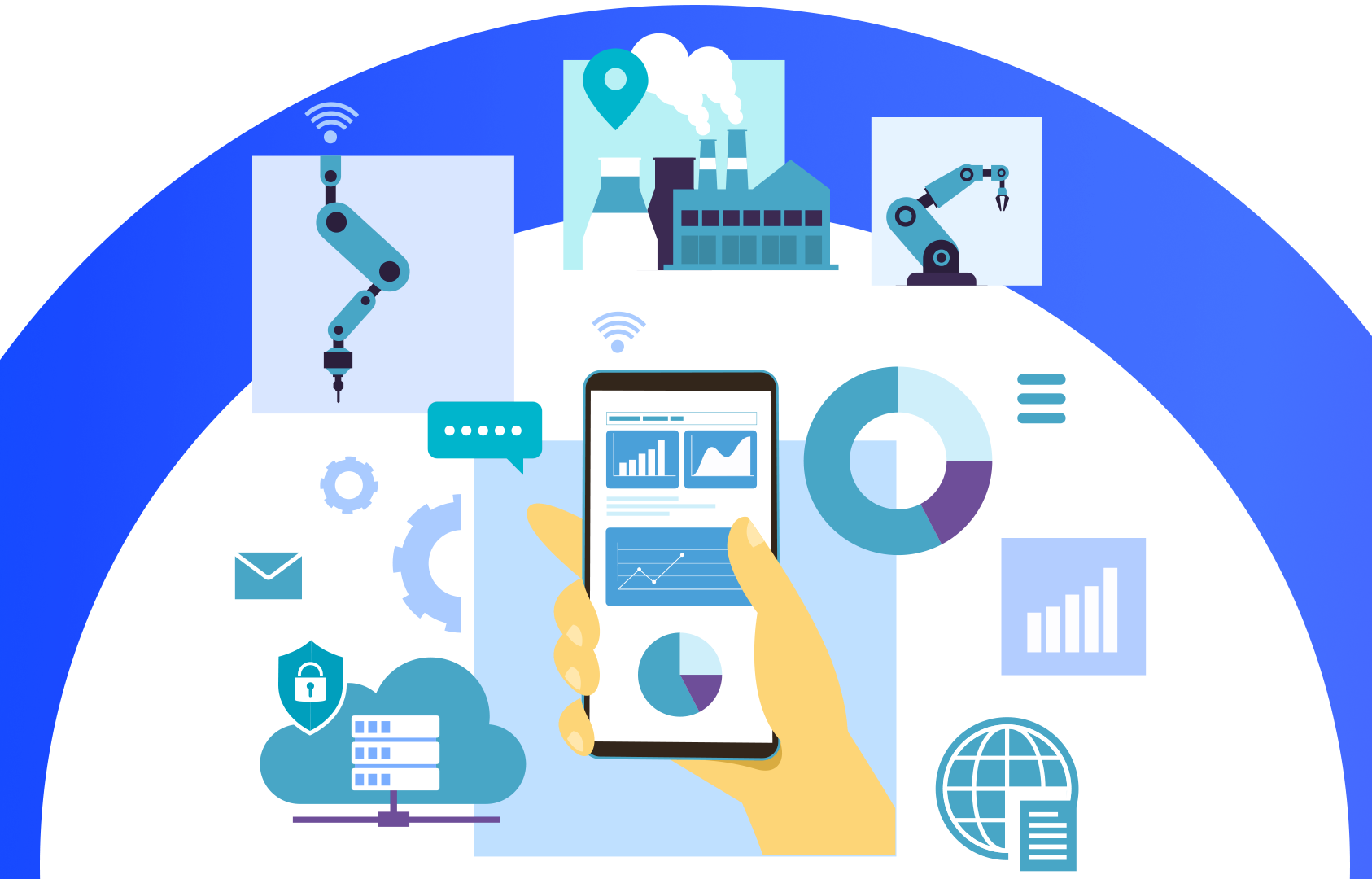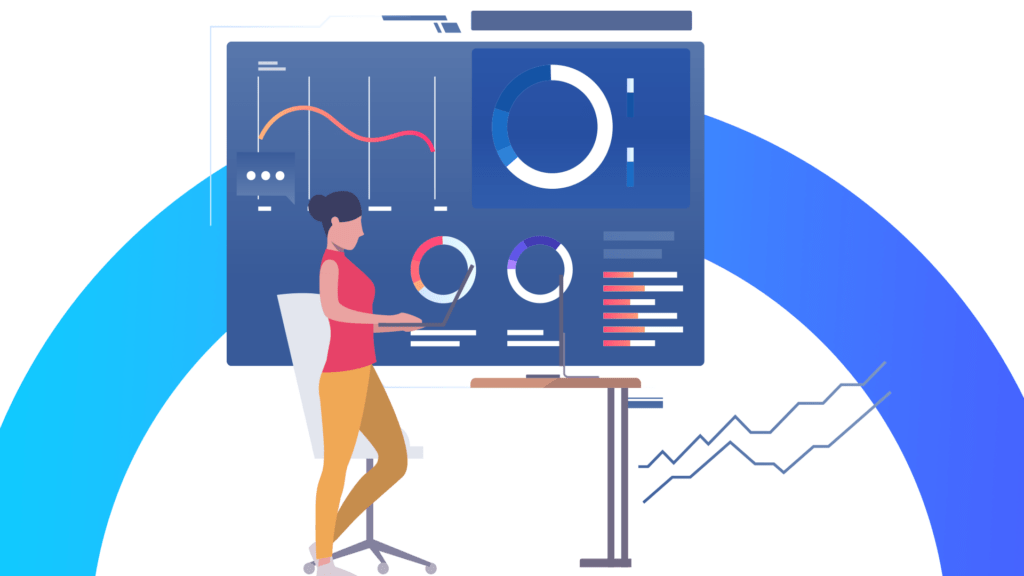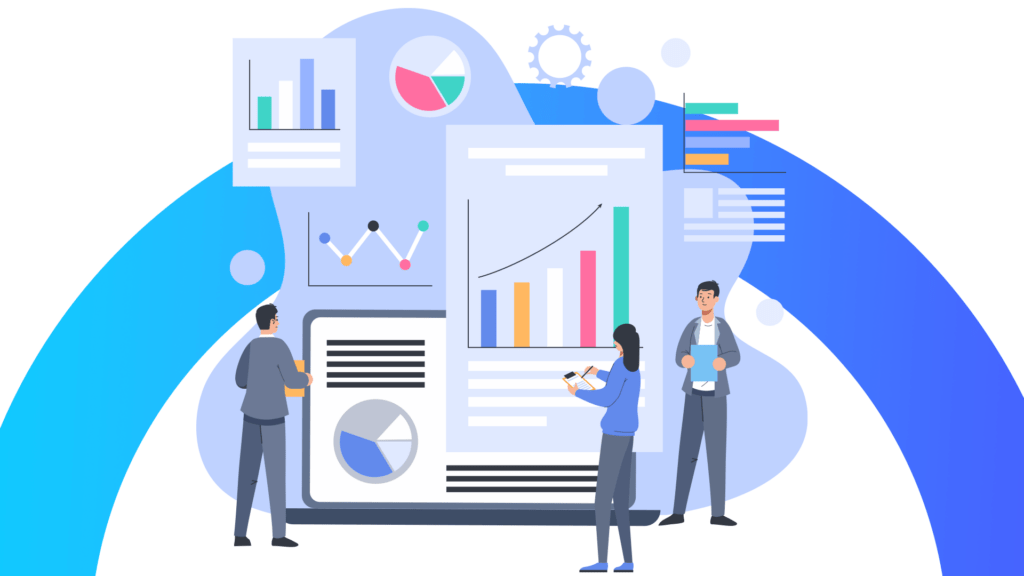In the manufacturing sector, companies aim to maximize product quality, efficiency, and security. To achieve this, maintenance and equipment care play a critical role. As a result, the behavior of large-scale and complex assets, commonly found in factories, is being predicted through Industry 4.0 innovations. Moving away from time-consuming and expensive physical prototyping, manufacturers today are securing their critical assets with digital twin capabilities.
The global digital twin market, with respect to the manufacturing sector, is forecasted to reach a market size worth over $6 Billion by 2025. This reflects how transformative the digital twin is, which has pushed all major industries to adopt it.
What is a digital twin?
Having been conceptualized in David Gelernter’s book ‘Mirror Worlds’, the concept of the digital twin was later applied by Michael Grieves to manufacturing. In 2010, the name ‘digital twin’ was coined by John Vicker of NASA. The concept was used to create digital simulations for the testing of space capsules and crafts.
To put it simply, a digital twin virtually represents a person, process, system, or an asset. It is designed to accurately replicate its digital version. A common example of a product twin is something you possibly have in your pocket: Google Maps. This is the earth’s surface mirrored in a digital twin, optimizing commute by linking real-time traffic data.
While developing a digital twin, developers utilize feedback gathered from sensors attached to the real-world asset. Thereafter, the digital twin creates a mirror allowing a holistic view into real-time behaviour of the asset in a real-world setting. By reflecting such insights, digital twins enable the user to optimize performance, anticipate maintenance needs, and circumvent costly failures.
Read on to learn more about value creation through digital twins and its utility in smart manufacturing.

How a digital twin operates
Let’s assume that the object of study is a wind turbine. The machine is rigged with various sensors according to key areas of functionality. The various aspects of the machine’s physical performance are recorded by these sensors, such as temperature, energy output, weather conditions, and so on. Upon receiving said data, the digital model allows for various simulations to be conducted. This enables the user to analyze issues in performance, identify patterns, and create potential enhancements.
Manufacturers utilize solutions such as Asset Performance X, which creates digital twins to enable optimized manufacturing processes. It hosts the digital twin by leveraging the OmniConnect™ Data Cloud platform.
By offering a selection of pre-built physics-based and machine learning models, Asset Performance X simplifies the process of optimizing asset performance. It has a user-friendly interface. Users easily choose an asset type, input design data, and map live tags. This leads to automatic and precise calculation of detailed performance KPIs. With a fit-for-purpose visualization experience, companies have a holistic view of their asset’s performance in real-time.
Benefits in manufacturing brought about by digital twin
In industrial and manufacturing environments, the efficient operation of assets and equipment is critical for productivity and cost management. However, due to the inefficiency of running these plants, companies go through multiple challenges. Unplanned maintenance and downtime, uncertainty in current asset performance, reduced equipment lifespan, and rising energy costs are a few of the obstacles faced. Let’s explore the role digital twins play in alleviating these pain points.
Risk assessment
Even before it is built, the manufacturer designs, installs, or tests a virtual model of a machine or system configuration. The digital twin technology shows interaction not just between individual devices, but within the entire system. This will help in reducing potential high costs due to accidents, machine failure, and unplanned downtime.
Predictive and preventative maintenance
Unplanned downtimes are responsible for hefty costs to manufacturers. A digital twin helps anticipate component breakdowns or other issues through historical trend analysis. Upon receiving data from each asset, digital twins prevent any gaps in the production stream and enable predictive maintenance.
Process and production optimization
Digital twins enable smart manufacturers to predict the quality of the end product. This helps informed decision-making about process enhancements and material upgrades. Consistency is ensured in a large-scale production, with the final product aligned with specifications.
Furthermore, digital twins allow manufacturers to identify and evaluate the most efficient methods of production. If the ideal capacity of production flow is not being reached, the digital twin will identify space for improvement. This further reduces energy and material consumption, helping smart manufacturers reach sustainability goals.
Real-time asset monitoring
Through the creation of a digital replica of the physical assets, digital twins provide real-time insights to smart manufacturers. This empowers them to make quick, yet well-informed production decisions. It also allows for continuous asset health monitoring, through which manufacturers take steps to extend equipment lifespan.
Real-life applications of digital twin
While digital twin offers numerous solutions, there is a limit to the type/ scale of manufacturing enterprise to which to applies. Objects/ assets complex enough to create a regular and intensive flow of data required by a digital twin are appropriate. Manufacturing projects that are large-scale, mechanically complex and/or with power equipment, are best suited to make use of digital twin capabilities.
Nevertheless, digital twins are being applied in all major large-scale industries. From Emirates to SpaceX, digital twin combined with rapidly advancing supportive technologies are being used to optimize operations.
The aforementioned digital twin host – Asset Performance X was utilized to create a complete plant digital twin. Owners of the renewable power plant in Morocco were able to make data-driven decisions to update its operational philosophy. By bypassing the feedwater heaters at low load, a 7% increase in plant power production was achieved.
Impact of the digital twin on major industries
Asset-intensive industries experienced a major shift in their existing operating models. This disruptive wave is caused by users requiring integrated physical and digital view of assets, equipment, processes, and facilities. Digital twins play a huge role in providing the same. With new features and capabilities being created within digital twin tech, the scope is limitless.
To ensure that your manufacturing facility is equipped with modern technology needed for maximum optimization, talk to us.




